ARTIFICIAL INTELLIGENCE & POPULAR CULTURE
LEGO officially entered the AI art wars with a marketing misstep that's worse than stepping on a Lego brick barefoot in the middle of the night.
In a Ninjago character quiz on Lego.com, the company released a series of ten images that were clearly (and worse, poorly) AI-generated. The blunder was first spotted by the eagle-eyed @legoanimegirl on X (formerly Twitter).
Obviously, fans were up in arms today, including one of the co-creators of Ninjago, Tommy Andreasen, who wrote: "This is just lousy in all aspects."
Let's take a closer look at the controversial Lego AI images in question:
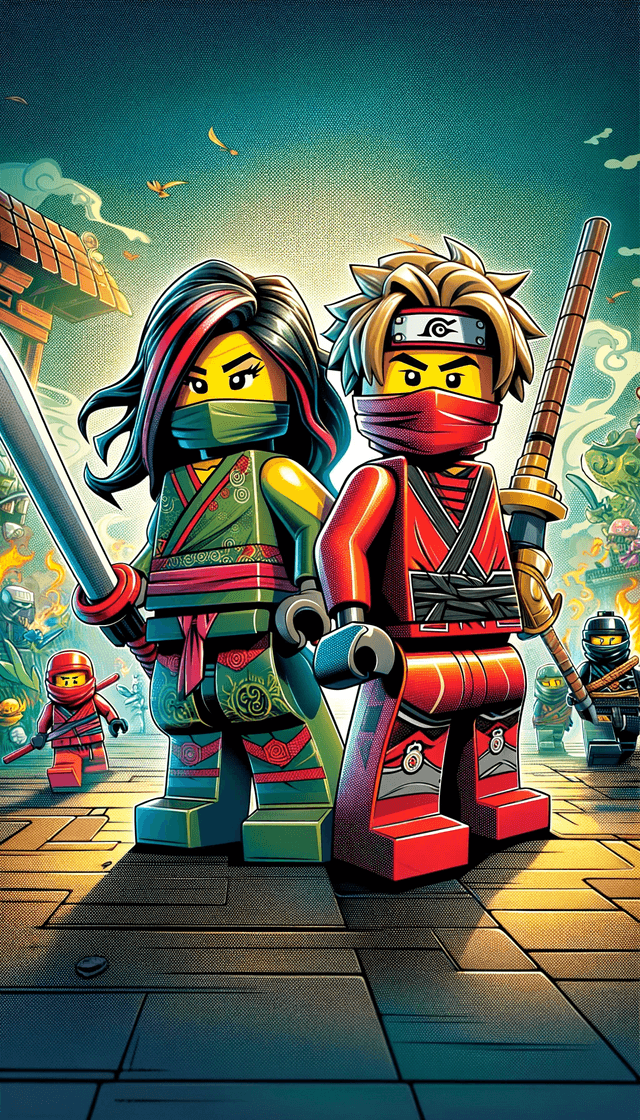

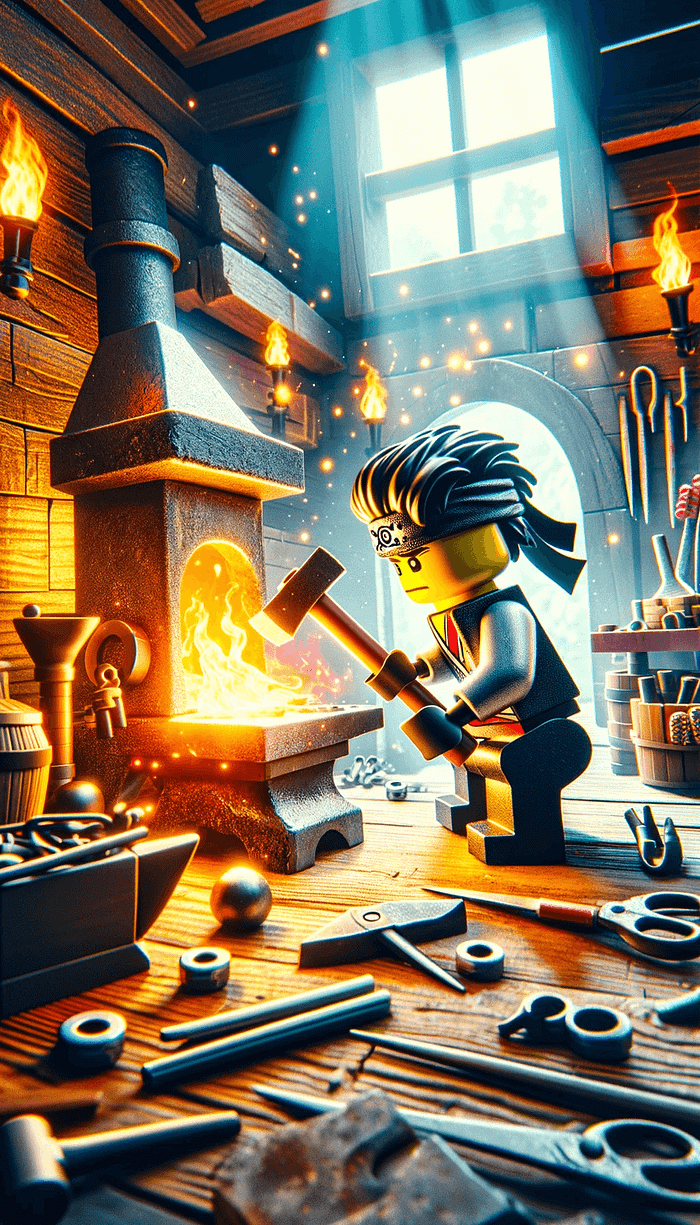
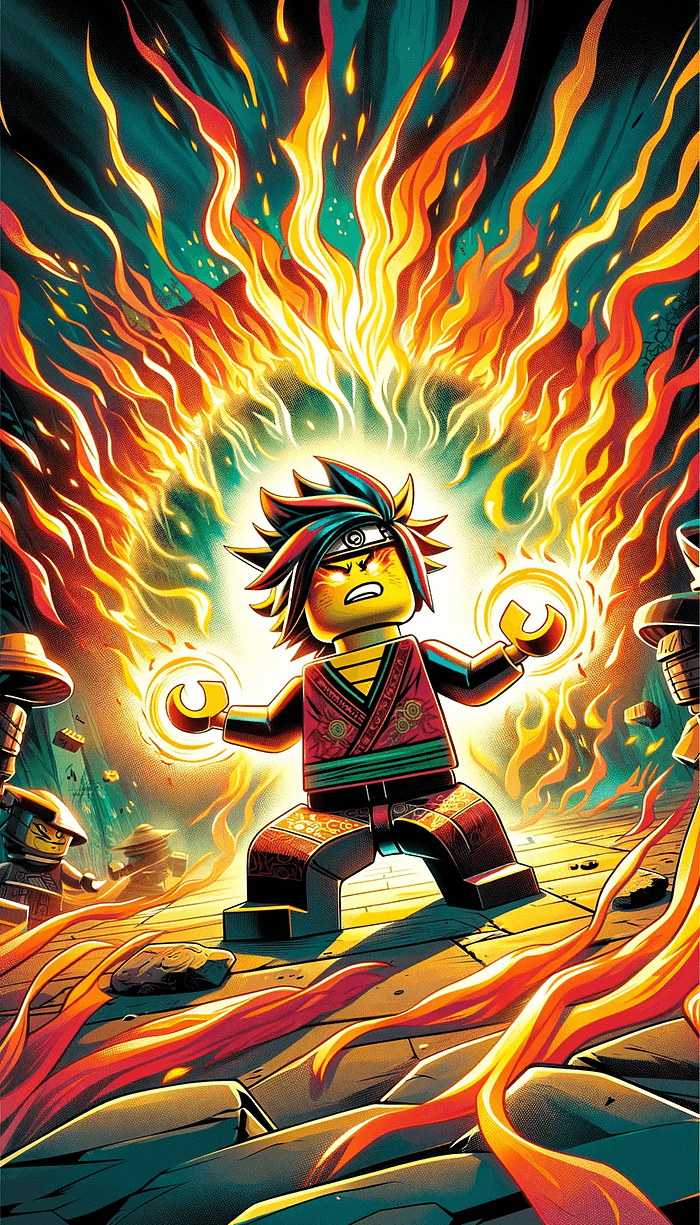
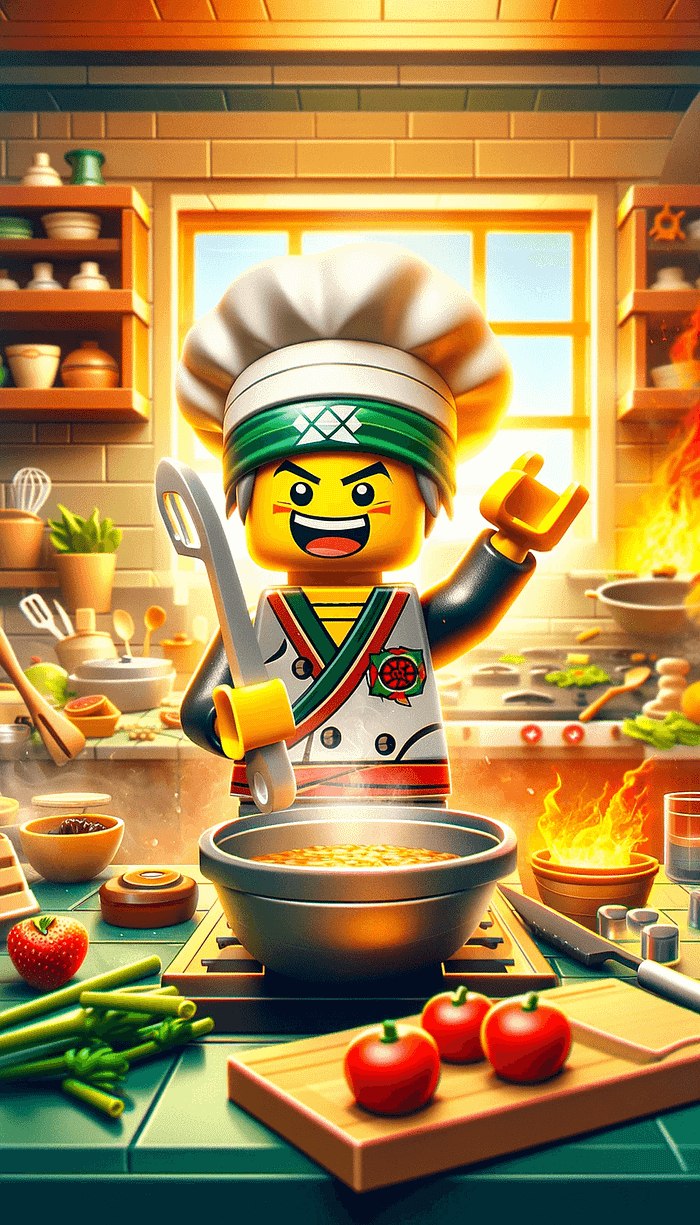

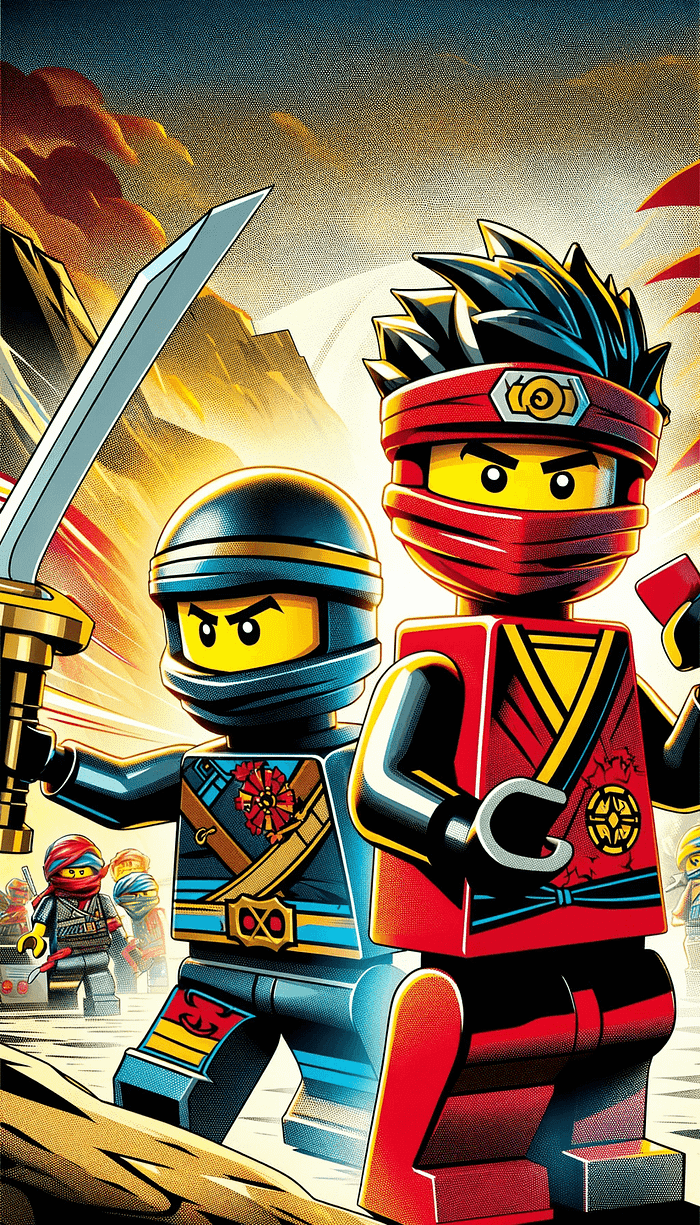
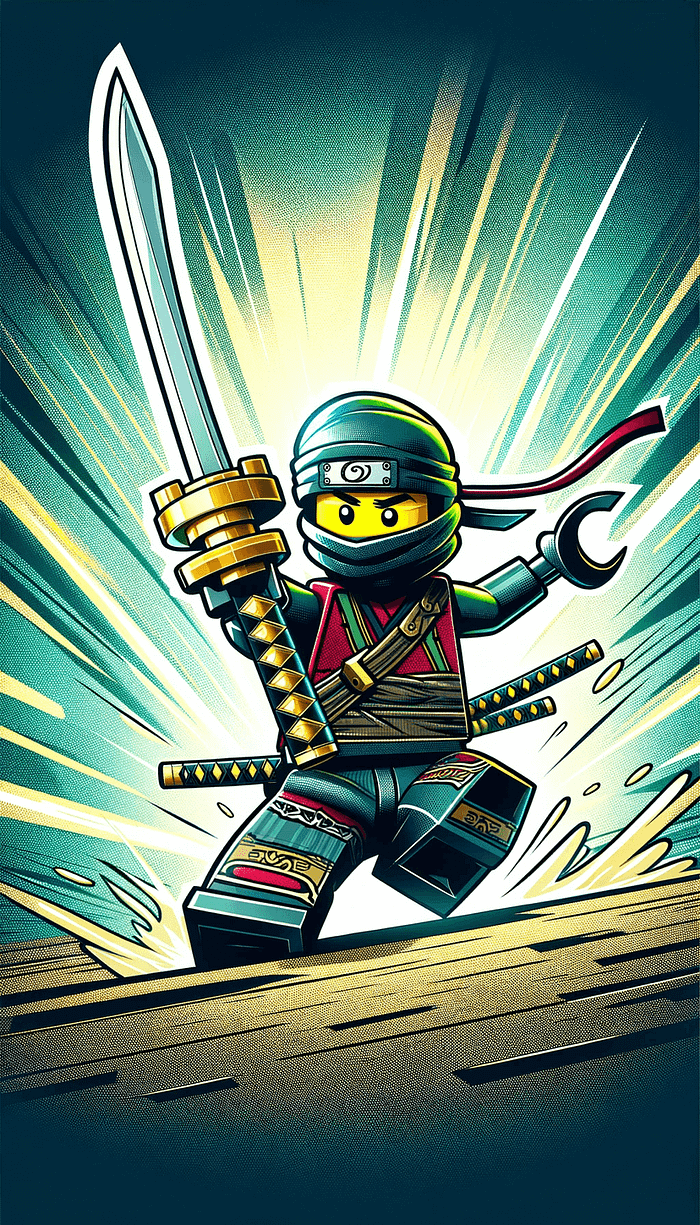
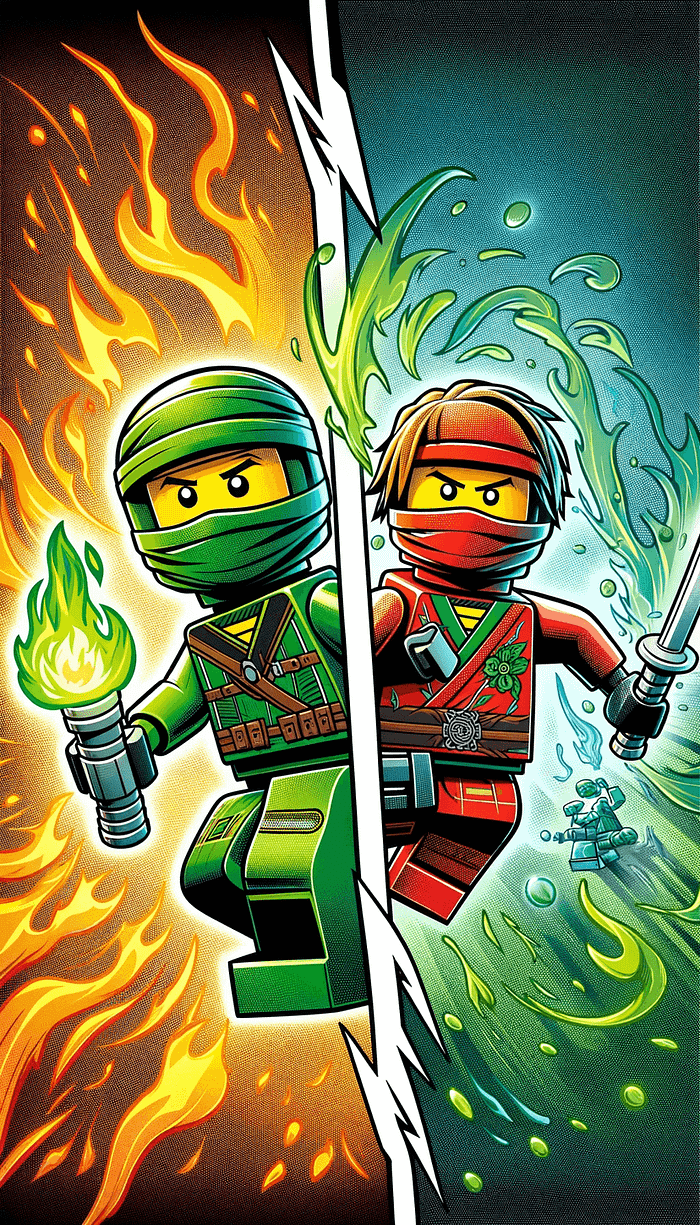
The Great Brick Botch: LEGO's AI Art Fumble
In my professional capacity as an arbiter of AI art, let me say: "Yikes". Those images are sloppy. Ethical considerations aside (such as paying artists and creative teams, let alone misleading children with impossible products and character designs), they really should've hired a professional.
There are several errors that reveal these are AI generated, and each detracts from the integrity of the illustration (let alone Lego's brand).
- Random artefacts (weird blobs and half formed "things")
- Unaligned blades (swords and lightsabers often don't join hilts)
- The same subject rematerialises in the background
- Nonstandard proportions (Lego characters are off-model)
- Blurred and imprecise insignia/design elements
- "Miscellany" (check out the random tools at the blacksmith's)
- Hilariously, hands (even Lego hands prove a struggle for AI!)
- Studs on top of hairpieces (a big Lego no-no)
- Non-standard Lego pieces.
- Naruto emblems (more on this later!)
Shitting Bricks
This not the first time a brand's attempt to incorporate AI art has backfired spectacularly. Last January, the collectible card game monolith Magic the Gathering ran afoul of fans when it was revealed they hadn't been entirely honest about AI elements in their cards (after their publisher, Wizards of the Coast, had previously been caught out using AI art surreptitiously in a Dungeons & Dragons sourcebook). Likewise, Marvel/Disney + came under fire for using AI art in the opening titles to Secret Invasion (although, as I argued at the time, this was simpatico with the series' theme of imitation).
However, Lego's brick-bungle is perhaps closer to the notoriously limp Willy Wonka Experience in how both used AI to mislead children and misrepresent products. In both cases, things were not as advertised (at least the Magic the Gathering cards were "what-you-see-is-what-you-get).
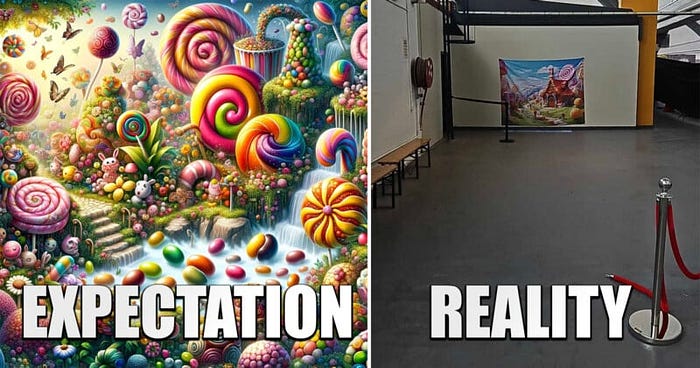
LEGO Group Makes a Blocky Blunder
What sets Lego's mishap apart from those of Wizards of the Coast and Marvel (and puts it in the bad egg bucket with Wonka) is the level of AI amateurism, and the disappointing, lacklustre quality of the images, seriously undermining the trust and expectations of their audiences:
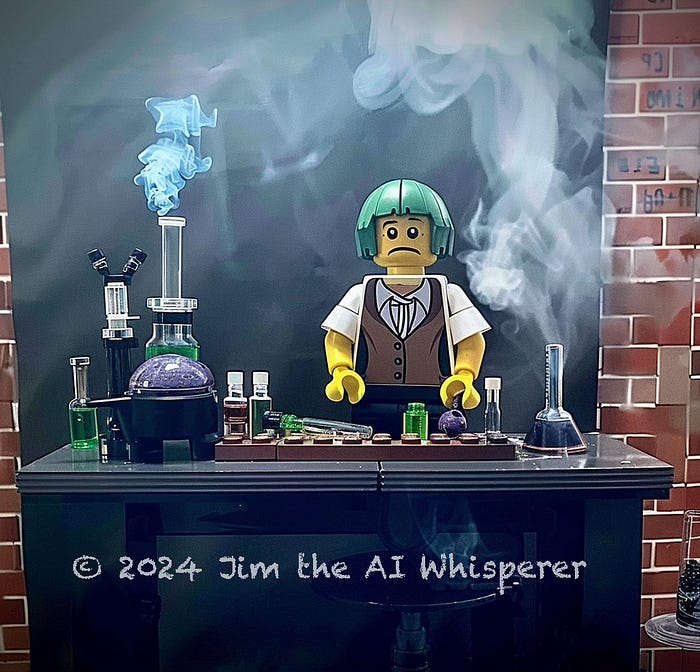
Cracking the Code: How LEGO Likely Built Its AI Images
Now, I am 100% sure I know how Lego made their images. The clue is the restrictive aspect ratio, 1:2. That would seem to indicate they used Dall-E, not Midjourney (of course MJ can do that ratio, but the simple explanation is they used default settings). Also, Midjourney renders more photorealistic images of Lego — resembling displays of physical sets — whereas Dall-E generates more illustrative box art when given a basic Ninjago prompt.
AI Amateurs at Play: Where LEGO Went Wrong
Because companies with burgeoning AI art departments are often making surprisingly "noob" mistakes (and mistakenly think AI is as easy as it looks) it's conceivable Lego went the easiest route and used ChatGPT to prompt the image. In fact, I tried to replicate that process and got similar results:
What gets me the most is how Lego cut corners here. They didn't do anything proprietary or specialized. This is especially incriminating because it's Lego, which has a signature look. They should have trained an AI image generator on their brand assets. There are iconic aspects to Lego bricks, such as the precise shape, studs, and the interlocking mechanism.
The inaccuracies in depicting these fundamental features undermines the core identity of Lego as a brand with a consistent design language. Lego is renowned for its meticulous attention to detail and quality in physical products. They should have applied those same rigors to their AI art.
Illegal Builds: When LEGO Met Naruto
In fact, the branding is so wrong here that other brands have bled through the training data, leading to the unlicensed use of a logo from the similarly martial arts-themed manga Naruto. Scroll back through the Lego Ninjago images and see if you can spot Naruto's insignia on hero Kai's headband!
Extremely recognisable visual elements can leak through image generators because of their prevalence in pop culture, which is something I cheekily exploited at Christmas with the official Coca Cola AI image generator by invoking Pepsi's distinctive logo within their custom model (which was supposed to be exclusive to their assets) to make mischievous mashups:
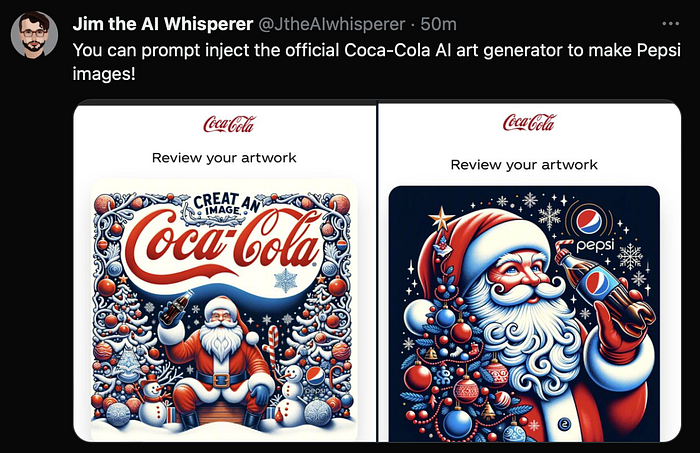
Big brands risk having their identity compromised when AI art generators inadvertently incorporate assets from competitors. Crossovers like this are why companies need to carefully curate and control datasets used to train their AI models, and ideally, appoint dedicated AI experts with experience.
Personal Pieces: My Life with LEGO and AI
Hey, just putting it out there: I'm a huge Lego fan; I'm also a huge AI fan. As I write this article in my office, I have new Animal Crossing Lego, Indiana Jones Lego, Mario Lego, and Disney Lego all within reach. Any time that I'm not tinkering with the latest AI, I'm probably building my Lego. I'm so immersed in both worlds that they'd combine together like a certain well-designed Danish interlocking block, with that satisfying signature 'click'!
Forward Thinking or Backtracking? LEGO's AI Future
But is the Lego Group looking to include AI in its future, after this setback? Well, the company quickly released a well-written response that plays the possibility both ways. It's one step forwards, two steps back, but that's how to moonwalk (which is the coolest dance move ever). So never say never?
We have a clear policy not to use generative AI to create LEGO® content. We fundamentally believe in the wonder and power of human creativity and will continue to encourage and celebrate the talented artists who help bring our brand and characters to life.
These images were used in a test which happened outside of our usual approval processes, and we will take all necessary steps to ensure that it won't happen again.
We believe generative AI offers interesting opportunities and we will continue to explore how we can use it to improve the experiences we offer and our ways of working.
The Building Blocks of Integrity
My hope is that Lego's next adventures into this space will be approached with meticulous care, precision, and respect. These qualities are what the Lego legacy, consumers and the AI artistic communities deserve. The goal is to create experiences that are not only technically impressive but also true to the essence of what makes Lego so beloved. In doing so, we are building a model future for what can be achieved with AI art together.
👏 Enjoyed this article? Medium rewards writers through your applause.
Here's a tip: if you want to clap 50 times, press and hold the clap button to save your fingers from multiple clicks. Your claps keep my articles coming!
Who is Jim the AI Whisperer?
Jim the AI Whisperer offers private training on how to use AI generators to create visuals, as well as how to improve AI output for compelling content.
Let's Connect!
If you're interested in personal coaching or hiring my services, feel free to contact me. I'm also available for podcasts, interviews, and more. And if you're keen on supporting my work, check out my Buy Me a Coffee page.

Stay Updated and Engaged
Want to stay on top of the latest about AI? Subscribe to receive an email whenever I hit publish. I keep it informative, engaging, and a step ahead.
You might enjoy these related articles from Jim the AI Whisperer:

This story is published on Generative AI. Connect with us on LinkedIn and follow Zeniteq to stay in the loop with the latest AI stories. Let's shape the future of AI together!


